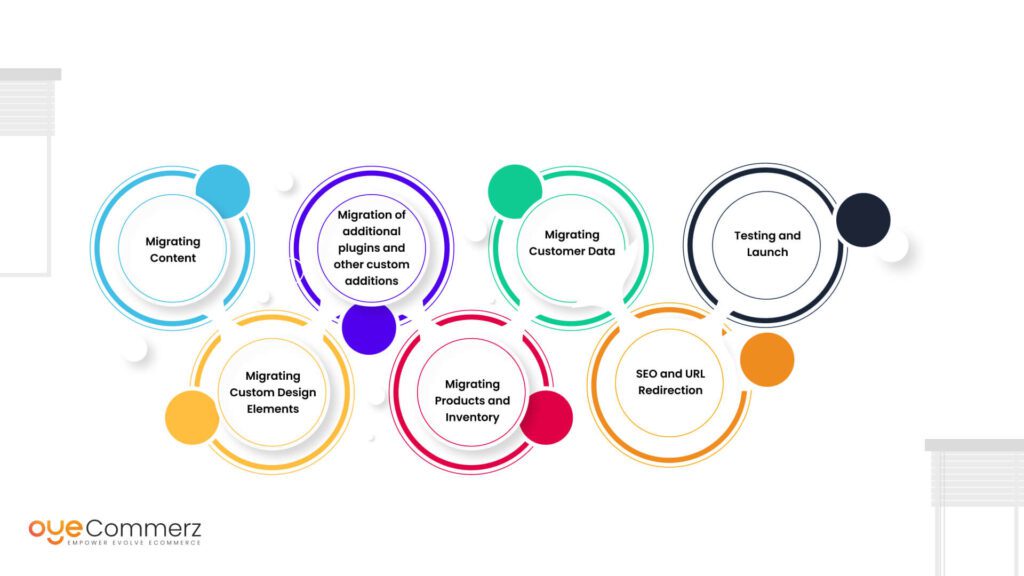In the ever-evolving world of eCommerce, picking the right platform is essential for your business's prosperity. If you’re currently using WordPress and considering a migration to an alternative, you’re not alone. Countless businesses are making this transition to leverage Shopify’s robust tools, ease of use, and growth potential. This guide will take you through the steps of migrating from WordPress to this platform seamlessly, ensuring that you unlock your eCommerce potential.
Why Switch from WordPress to this platform?
Before exploring the migration process, it’s essential to realize why this change can be advantageous for your eCommerce business:
Accessible Tools: Shopify provides an intuitive dashboard that makes easier store handling, allowing for non-technical users.
Growth Potential: As your company develops, Shopify can accommodate greater traffic and transactions without sacrificing efficiency.
Built-in Tools: Shopify includes pre-installed features for search engine optimization, analytics, payment management, and more, minimizing the requirement for several plugins.
Enhanced Security: With Shopify, you utilize robust security features that safeguard sensitive customer details.
Steps for a Seamless Migration
Migrating your digital shop from WP to Shopify requires several phases.
Here’s steps to ensure a hassle-free transition:
Prepare Your Migration Approach
Begin by outlining your migration blueprint. Pinpoint which aspects of your existing site you wish to move, such as:
Product data
User details
Order history
Blog content
Pick the Appropriate Migration Package
Based on your needs, choose a migration plan that aligns with your eCommerce goals. Professional services offers various options:
Starter Package: Perfect for boutique stores with minimal products.
Standard Migration Package: Suitable for medium-sized businesses with moderate needs.
Comprehensive Solution: Excellent for high-volume stores demanding extensive customization.
Save Your Data
Ahead of initiating the migration, ensure that you have a complete copy of your WP site. This task is critical in the event anything goes off track during the move.
Retrieve Your Information from WP
Leverage extensions or alternative solutions to export key information from your WP site:
Products
Clients
Orders
Content pieces
Migrate Content into Shopify
When you have your content extracted, employ Shopify’s migration apps or specialized apps to upload your information into your new store. Confirm that all data is correctly structured and arranged.
Customize Your Shopify Site
After migrating content, adjust your Shopify platform’s layout to reflect with your business goals. Look into engaging a designer if you need detailed customization.
Configure TransactionOptions and Delivery Settings
Set up transaction methods and delivery choices in Shopify to facilitate a seamless purchase experience for customers.
Apply SEO Best Practices
To preserve your search engine rankings during the migration:
Implement 301 URL mappings from previous URLs to migrated ones.
Update meta tags.
Optimize media and copy for search engines.
Test Your New Store
Before publishing, completely review your Shopify store. Identify any discrepancies, payment processing issues, or untransferred content.
Publish Your Store
When everything is in order, it’s the opportunity to publish! Share the change to your clients and encourage them to discover the new features of your Shopify store.
Post-Migration Assistance
Post launching your new Shopify for traffic growth store, ongoing support is essential. Think about engaging professionals who can help with:
Technical support
Marketing strategies
Performance optimization
Conclusion
Migrating from WP to Shopify can be a crucial step for Shopify platform benefits your online retail. By using this guide and working with professional services like those offered by OyeCommerz, you can ensure a smooth transition that improves your online presence. Accept the change and unlock the full capabilities of Shopify today!
